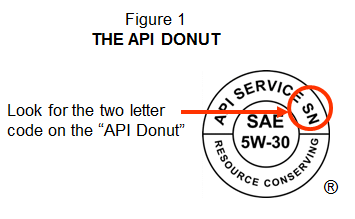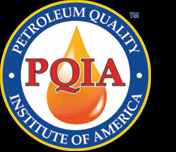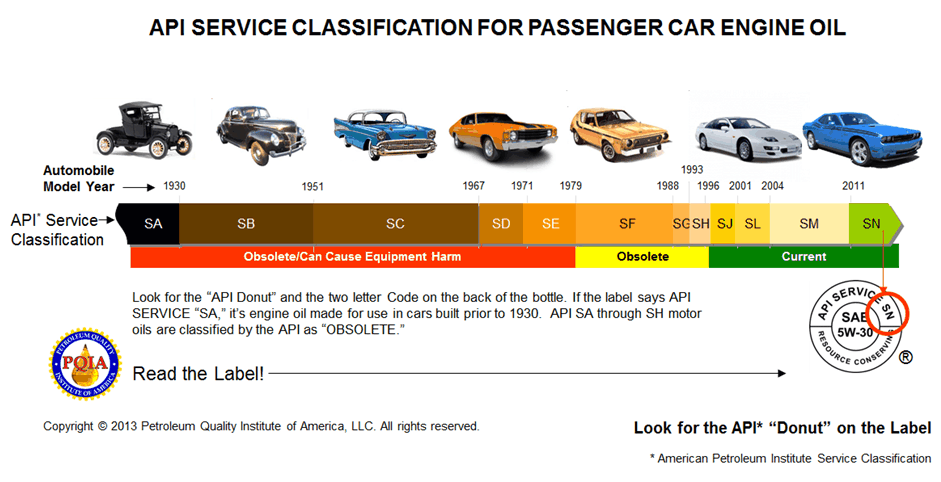|
The labels include
two important pieces of information to determine
if an engine oil is appropriate for use in your
vehicle. The first piece of information speaks
to viscosity grade.
The
Society of Automotive
Engineers (SAE) defines a numerical
system for grading motor oils according to
viscosity. The suffixes (0, 5, 10, 15 and 25)
followed by the letter W designate the engine
oil's "winter" grade.
Look to your owner's
manual. It specifies the viscosity grade
required for your car's engine. Today, the most
common grades are 5W-30 and 10W-30.
Watch
for the "W"
Whereas the labeling on the bottle of engine oil
may suggest the product is a 5W-30, note, if
there is no "W" between the 5 and the 30 it may
not be a 5W-30. As an example, a SAE 5-30 is not
the same as an SAE 5W-30.
The next 'code" to look for
is the API Service Classification. Although it
might appear complicated to understand at the
start, it is really a simple system to get your
arms around. Think of it this way, when cars
were first built, the oil they required needed
an API SA Service Classification. From there, it
moved to SB, SC, SD, and so on (skipping only SI
and SK). The current API Service
Classification is SN.
So if you buy an
engine oil meeting only API SA, it's an engine
oil formulated for use in vehicles built in the
1920s. And SA is not hard to find mixed in with
SM on the shelves at c-stores and others.
Furthermore, it's also not hard to find SF, SJ
and other API Service Categories on the shelves.
Also, don't let price guide you. Engine oils
with a Service Classification prior to SN
(including SA) are often priced close to that of
API SN.
The service rating of
passenger car and commercial automotive motor
oils is classified by the American Petroleum
Institute (API). The program certifies that an
oil meets certain Original Equipment
Manufacturer (OEM) quality and performance
standards. The service rating is shown in the
API "Service Symbol Donut" on the product label.
 The
labels include two important pieces of
information to determine if an engine oil is
appropriate for use in your vehicle. The first
piece of information speaks to viscosity grade.
The
Society of Automotive
Engineers (SAE) defines a numerical
system for grading motor oils according to
viscosity. The suffixes (0, 5, 10, 15 and 25)
followed by the letter W designate the engine
oil's "winter" grade. The
labels include two important pieces of
information to determine if an engine oil is
appropriate for use in your vehicle. The first
piece of information speaks to viscosity grade.
The
Society of Automotive
Engineers (SAE) defines a numerical
system for grading motor oils according to
viscosity. The suffixes (0, 5, 10, 15 and 25)
followed by the letter W designate the engine
oil's "winter" grade.
Look
to your owner's manual. It specifies the
viscosity grade required for your car's engine.
Today, the most common grades are 5W-30 and
10W-30.
Watch
for the "W"
Whereas the labeling on the bottle of engine oil
may suggest the product is a 10W-30, note, if
there is no "W" between the 10 and the 30 it may
not be a 10W-30. As an example, a SAE 10-30 is
not the same as an SAE 10W30.
The next 'code" to look for
is the API Service Classification. Although it
might appear complicated to understand at the
start, it is really a simple system to get your
arms around. Think of it this way, when cars
were first built, the oil they required needed
an API SA Service Classification. From there, it
moved to SB, SC, SD, and so on (skipping only
SI). The current API Service Classification is
SM.
So if you
are buying an SA oil, it's an engine oil
formulated for use in vehicles built in the
1920s. And SA is not hard to find mixed in with
SM on the shelves at c-stores and others.
Furthermore, it's also not hard to find SF, SJ
and other API Service Categories on the shelves.
Also, don't let price guide you. Engine oils
with a Service Classification prior to SM
(including SA) are often priced close to that of
SM.
American Petroleum Institute
Gasoline Engine Oil Service
Classifications |
|
Category |
Status |
Service |
|
SN |
Current |
Introduced in October 2010 for 2011 and
older vehicles, designed to provide
improved high temperature deposit
protection for pistons, more stringent
sludge control, and seal compatibility.
API SN with Resource Conserving matches
ILSAC GF-5 by combining API SN
performance with improved fuel economy,
turbocharger protection, emission
control system compatibility, and
protection of engines operating on
ethanol-containing
fuels up to E85. |
|
SM |
Current |
For 2010 and older automotive engines. |
|
SL |
Current |
For 2004 and older automotive engines. |
|
SJ |
Current |
For 2001 and older automotive engines. |
|
SH |
Obsolete |
|
|
SG |
Obsolete |
|
|
SF |
Obsolete |
|
|
SE |
Obsolete |
CAUTION - Not suitable
for use in gasoline-powered automobile
engines built after 1979. |
|
SD |
Obsolete |
CAUTION - Not suitable
for use in gasoline-powered automobile
engines built after 1971. Use in more
modern engines may cause unsatisfactory
performance or equipment harm. |
|
SC |
Obsolete |
CAUTION - Not suitable
for use in gasoline-powered automobile
engines built after 1967. Use in more
modern engines may cause unsatisfactory
performance or equipment harm. |
|
SB |
Obsolete |
CAUTION - Not suitable
for use in gasoline-powered automobile
engines built after 1951. Use in more
modern engines may cause unsatisfactory
performance or equipment harm. |
|
SA |
Obsolete |
CAUTION - Not suitable
for use in gasoline-powered automobile
engines built after 1930. Use in more
modern engines may cause unsatisfactory
performance or equipment harm. |
|



